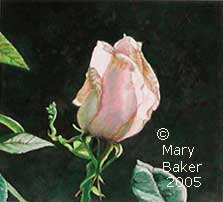When you are working on a painting and you get to the point where it is just not working, what in the world do you do?
Turn the painting upside-down
Turning a painting upside-down tricks the eye into seeing what you are working on in a completely different way. All of a sudden you will be able solve a problem that baffled you minutes before.
Hold the painting up to a mirror
Looking at a painting in a mirror works very much the same way as turning a painting upside-down does, only the results are even more dramatic. The problem is even more glaring and it is an enormous relief to see what is not working and to be able to figure out the solution.
Stop painting
If you’ve turned a painting upside down and held it up to a mirror and you still can’t figure out what the problem is–stop painting. You may need to stop painting for a few minutes, few hours, few days, months or even years. It depends on you and it depends on the painting.
The worse thing you can do is to keep working on the painting. It won’t solve the problem, you will become frustrated and the painting will become over-worked. It is a really good way to ruin a work of art.
There will come a point when you will know exactly what to do and can’t imagine why you never saw the solution before.
When I am working on a painting and I can’t find a solution to the problem, I always try to remember a phrase someone once told me which is: “If you don’t know what to do, do nothing.” A great piece of wisdom which always seems to work.
(c) Mary Baker 2005
